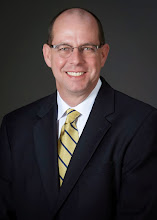One Bank or Many: Where Should I Keep My Accounts?
What’s
your banking strategy: One bank, many accounts—or do you like to,
literally, spread the wealth? Believe it or not, how you bank not only
helps you organize your funds, but if done right, it can also make you
money.
LearnVest's certified financial planner Elizabeth Sklaver shares tips to help you decide on the best scenario.
The One-Bank Advantage
Maybe you
got that first checking account that came free with your first job and
never looked back. Maybe every account you’ve opened since has been at
My First Bank. If that describes you, we get it: There’s one advantage
to keeping your checking and savings accounts in the same bank…
simplicity. With everything in the same place, you only have to visit
one bank—or make transfers between accounts at one bank—and remember one
set of login information. (And who hasn’t wasted precious moments of
their lives trying to remember their passwords?)
But as your
financial life changes, the one-size-fits-all approach may no longer
suit you. In fact, depending on your money needs, there are also a few
good reasons you may want to open accounts at more than one bank—and a
variety of factors that go into choosing the right one for you.
Why Multiple Banks Might Be Better: 4 Questions to Ask Yourself
1. Are You Likely to "Borrow From Yourself"?
Keeping
your checking and savings at separate institutions takes advantage of
the idea, “Out of sight, out of mind.” In other words, if your
hard-earned savings isn’t linked directly to your checking account, and
it takes 24 to 48 hours to free up funds, you might think twice about
spending that money.
And,
keeping both accounts in the same place can lead to some funky mental
math: If you’re just taking a minute to check the balance on your
checking account, but see all of the money in your savings as well,
you’re more likely to feel like you have all of those funds available to
spend, says Sklaver.
But what if
you like the way having one bank keeps you organized? If the idea of
checking in with accounts on multiple sites sounds like a little too
much work, you can always monitor all of your accounts in the free LearnVest Money Center, where you can check the balances without the temptation to spend.
2. Could You Get a Better Rate?
Here’s where the making money off your bank comes in: If you’re going to park money in a savings account—say, for an emergency fund—you want to be sure to get the best rate you can.
“While
brick and mortar banks are great for checking accounts, they usually
aren’t offering the most competitive interest rates for savings accounts
compared to online banks,” explains Sklaver. That’s why it’s often
recommended that clients open a savings account with an online bank.”
If you do
decide to put your savings somewhere with a higher interest rate, moving
your savings account between banks isn’t usually very difficult, and
most banks don’t charge fees simply for closing an account, Sklaver
says.
3. What Will It Cost You?
Before you make any moves, figure out what you’ll pay
in terms of fees and sheer inconvenience. Sklaver points out that
moving your checking account can be time-consuming and tricky. You have
to maintain a minimum balance until the account is closed to be sure you
aren’t charged fees, all of your money is transferred, any of your
automatic payments and linked accounts are switched, your debit cards
and checks are issued, and that you fill out any necessary tax
documents.
The thing
about checking accounts is that, for most people, they’re part of a
larger network of automatic payments and debits. “If you change
accounts, you have to change the information for everything from your
utility bills to your Amazon account,” Sklaver says. “Savings accounts
usually don’t have so many links, so moving them between banks is
generally less complicated.”
4. Do You Need to Spread Your Money Around?
If you’re
lucky enough to have a lot of cash on hand, you’ll need to think about
the maximum you can insure in any given savings account. Having more
than one bank helps keep your money safe through insurance with the
Federal Deposit Insurance Corporation (FDIC).
FDIC
coverage protects consumer deposits and savings in case a bank goes into
bankruptcy (of course, you need to make sure your bank is FDIC-insured,
info which should be listed on your bank’s homepage). Each
participating bank can insure deposits up to at least $250,000 per
person—$500,000 for joint accounts—so if you have more money than that,
storing your cash in more than one bank should ensure that your money is
protected.
How Do I Know If a Bank Is Right for Me?
We can talk
about interest rates and available ATMs all we want, but Sklaver says
it boils down to choosing a bank that makes you want to engage… and
that’s different for everyone.
“Some people find it absolutely crucial that they have a physical bank to visit,” she explains, “and some people feel the exact opposite—that
they never want to set foot in a bank again.” Those people need
different things from their banks, so the right bank for each would
likely be different.
Once the
basic criteria (reasonable interest for savings, easily accessible
checking without any unnecessary fees) have been met, she gives clients a
few banks to choose from. “I tell them ‘Visit the site, click around
and choose the bank that makes you feel the most comfortable,’” she
says. “Because if you don’t feel comfortable, you won’t want to use
it—and more than anything, we want you to use it.”


No comments:
Post a Comment